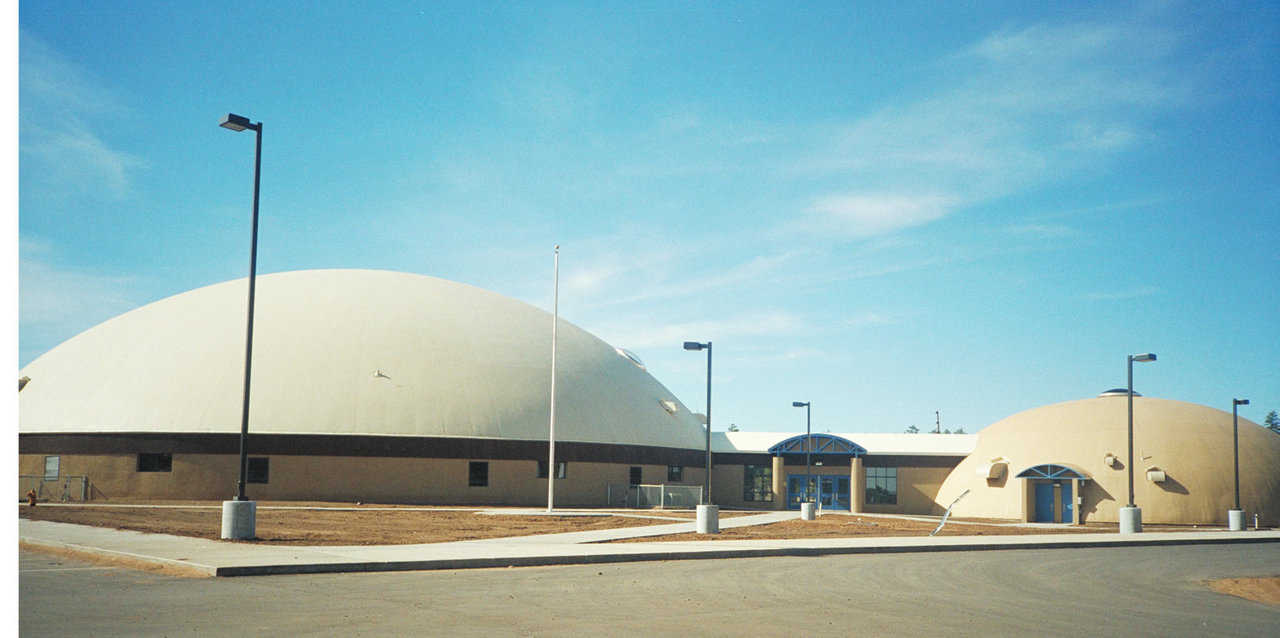Looking for quality
Heber and Overgaard, two towns with a contingent boundary and a combined population of less than 2000, joined forces, creating one school district serving both their communities and the surrounding area. Geographically, Heber and Overgaard sit among the pine trees and lakes in a mountainous region of Arizona. Economics within the two communities changed dramatically when environmental concerns closed their timber industry. In need of a new economic base, Heber and Overgaard began developing themselves into a recreational area for tourists and visitors.
“Basically, what drove us was economics,” says Superintendent Ron Squire, when asked why the Heber-Overgaard Unified School District chose Monolithic Domes for their new Preschool to Grade Three facility. Squire then explains that driven by economics does not mean that they were looking for cheap. “We wanted quality, and we wanted the most building we could get for our dollar,” he adds. “And based on that we began researching and shopping.”
Squire says, “We’re in an excellent location. We’re close to Phoenix, but out of the heat of the valley. During the summer, we offer all the usual water sports, including fishing and boating. In the winter, there’s cross-country skiing.”
A new school
In January 1999, Heber-Overgaard opened their new school campus with its two Monolithic Domes, connected by a corridor with an inviting foyer accessing both domes.
They dubbed their smaller dome (80’ diameter) the cafetorium because it includes the cafeteria, auditorium and kitchen. The first floor of the larger (160’ diameter), two-story dome houses classrooms, a media center, offices, and areas for Special Education, the Preschool, a Nurse’s Station and a staff lounge.
Currently the facility serves a teaching staff of eight and only 175 students, but Squire says, “We built for 250, and eventually we will have additional classrooms on the second floor of our large dome.” Meanwhile, they use that second floor only as a play area in bad weather.
Researching Monolithic Domes
Once the two communities decided on building as a unified school district, the voters quickly passed a bond for $3,150,000. That total had to cover construction at the new facility and an addition, costing about $350,000, at an existing school.
Squire says, “Then we organized a citizens’ committee, made up of a lot of people from the community and a lot of staff. We’re fairly small, so that wasn’t as hard as it might sound, and we had a strong common goal.”
According to Squire, the citizens’ committee found that two forms of construction seemed to fit their economic criteria: a metal building or Monolithic Domes. They ruled out traditional brick and mortar, Squire says, “Because that would have cost another third.”
They soon eliminated metal buildings as well and agreed to actually travel to and inspect a completed, fully operational Monolithic Dome school, before making a final decision. Squire says, "About twenty people, loaded into two vans, went over to Payson, Arizona.
“There were things about Payson that were real exciting,” he adds. The openness of the domes, the accessibility to all areas, and the flexibility for interior design and use favorably impressed the visitors.
Concerns
“But,” Squire says, “three things became real concerns: no external windows in the classrooms, acoustics and heating. Remember that most of our teaching staff was on this committee. So, as we started talking, it became obvious that the teachers would remain adamant about what they considered three problems. They wanted windows, they wanted to control the heat in their areas, and they wanted comfortable acoustics.”
Heber-Overgaard’s committee took their concerns to their architectural firm, Shill, Judd, Richards and Johnson in Mesa, Arizona. Larry Judd, who is now retired, but was a principal with the firm since its founding in 1963, received the initial call. Judd says, “Heber-Overgaard had Monolithic Domes in mind when they contacted us. They knew about Payson and White River. Cost effectiveness was very important to them and that’s the great advantage of Monolithic Domes – that and efficient heating and cooling.”
Solutions
When Judd retired, Marston Richards took over the Heber-Overgaard project. Richards says that a ten-foot-high stemwall as a base for the large dome took care of the window problem.
Superintendent Squire agrees, “The stemwall gave us the surface for exterior windows, so each of the classrooms, along the large dome’s perimeter, has a window that can be opened for fresh air. That compromised some of our cost-efficiency, but we were willing to do that.”
They next tackled the problem of individual room temperature control. “We’re in the mountains,” Squire says. “It gets below zero in the winter and into the 90s during the summer. We installed individual heating/cooling units in each room along the external corridor.” A central system heats and cools the internal section. “At this point,” Squire says, “it’s very satisfactory, and we have had some typically, cold, winter weather.”
As for the acoustics, in the small dome, panels, manufactured by Tectum, Inc., of woven aspen wood shavings and attached to the ceiling absorb unwanted echoes.
Acoustics in the upper floor of the large dome, however, required a more creative solution – one suggested by Gary Porter of Porter Brothers Construction Management in Mesa. He says, "Since that upper floor right now is used only occasionally and will eventually be made into classrooms, we didn’t want to invest a lot of money into anything permanent. So, the challenge became finding something effective for sound absorption but economical.
“We bought thirteen, Army-surplus, cargo parachutes, had them flame-proofed and approved by the fire marshal, and suspended from the ceiling in an arranged pattern,” Porter continues.
These 24’ parachutes, made of a bright blue or yellow, soft, cottonlike fabric, attached to the ceiling so that they look like giant, puffy pillows, cover more than sixty percent of the surface. The creative, playful look of the chutes and their affordable price made them a near instant hit.
Pleasing results
Two months after its first day of school, Heber-Overgaard held an Open House to which virtually everyone was invited and attended – students, parents, school administration, business and civic leaders. “The response was very positive,” Squire says. “Everyone seemed pleased. I am too. If I had to do it over, I would do it the same with one exception. I would have the stemwall troweled smooth instead of the rough, shotcrete surface. It’s not a safety hazard, but I’d prefer smoothness just for putting things on the surface.”
Architect Marston Richards, for whom Heber-Overgaard was the first Monolithic Dome project and who also attended the Open House, says that he too is pleased with the finished product. “I think the Monolithic Domes are great,” he adds. “As with any product, you have to understand the limitations. Because of the curvature of the domes, you have to pay special attention to the joinery, but that’s not a big problem.”
Construction Manager Gary Porter, who was responsible for coordinating building activities and making sure budget limitations were not exceeded, says, “The owners are very happy with the facility.” Porter, who managed the construction of other Monolithic Dome sites, says that he enjoys working on “nonstandard, round structures,” was “comfortable working on Heber-Overgaard,” and is “looking forward to the next Monolithic Dome project.”
But it’s Squire who sums it all up when he says, “The cost for our two-dome facility averaged out to $68 per square foot. More importantly, we got the quality and the features we wanted.”
Red Cross uses Monolithic Domes at Heber-Overgaard
Superintendent Ron Squire reported that the American Red Cross quickly established a disaster-relief distribution and processing center at the district’s Mountain Meadows Elementary School, during the Rodeo-Chediski fire that raged through eastern Arizona from June 18 to July 7, 2002.
According to a news bulletin on the Red Cross Grand Canyon Chapter website (www.arizonaredcross.org/newsletter.asp), volunteers at Mountain Meadows Elementary provided information, supplies, and help for emotional recovery.
Both Heber and Overgaard were in the fire’s path. Residents of both were forced to evacuate. In Overgaard the fire did not reach the area surrounding Mountain Meadows Elementary, but Heber did lose more than 200 homes.
Rodeo-Chediski, Arizona’s most destructive fire to date, burned across 468,638 acres of the White Mountains. It destroyed 467 homes, displaced 30,000 people who were forced to evacuate from nine communities, and took 4,400 firefighters to finally contain.
Note: This article combines two that were first presented in 1999 and 2002. Dollar amounts quoted were valid in 1999.
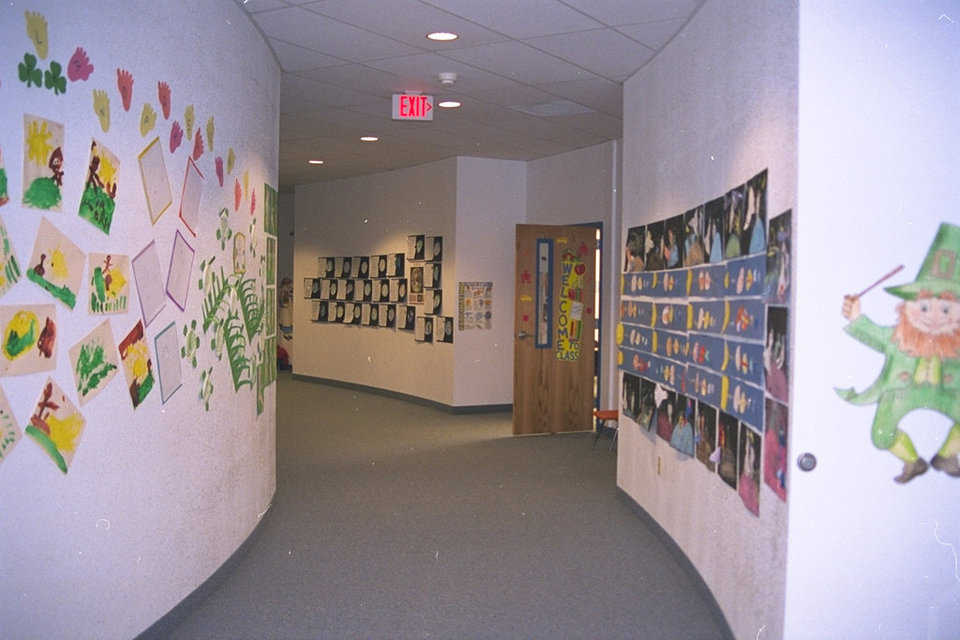
Connecting Corridor — Besides providing access to both domes, the much traveled corridor works as a display area for student art.
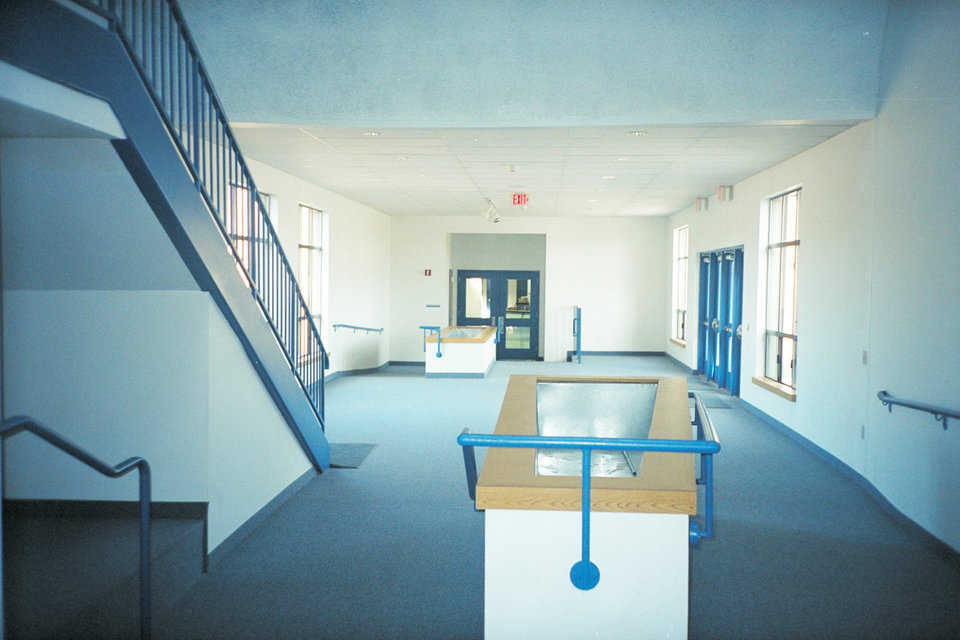
Entrance Foyer — An attractive foyer greets the 175 students, 8 staff members and visitors to Heber-Overgaard.
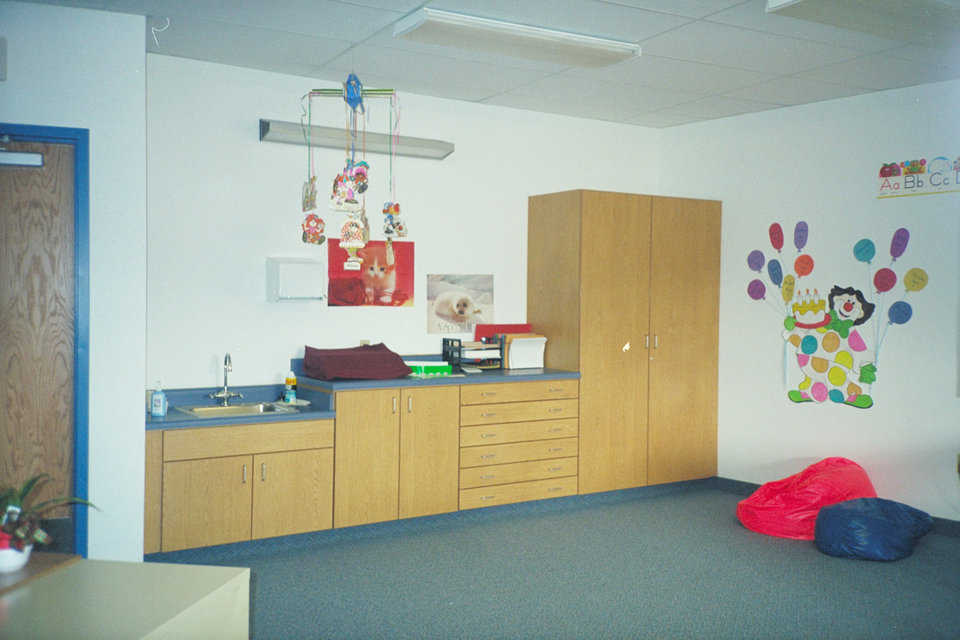
Preschool — First floor of the two-story, 160’ diameter Monolithic Dome houses the Preschool, Special Education, other classrooms, media center, offices, Nurse’s Station and staff lounge.
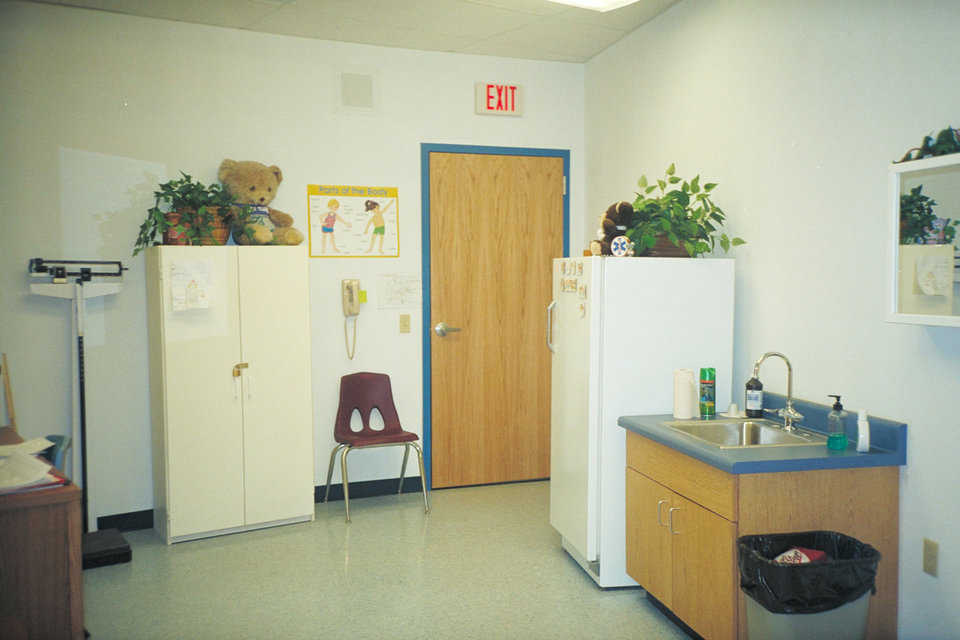
Nurse’s Station — It provides nutritional and health care information for the students and their parents.
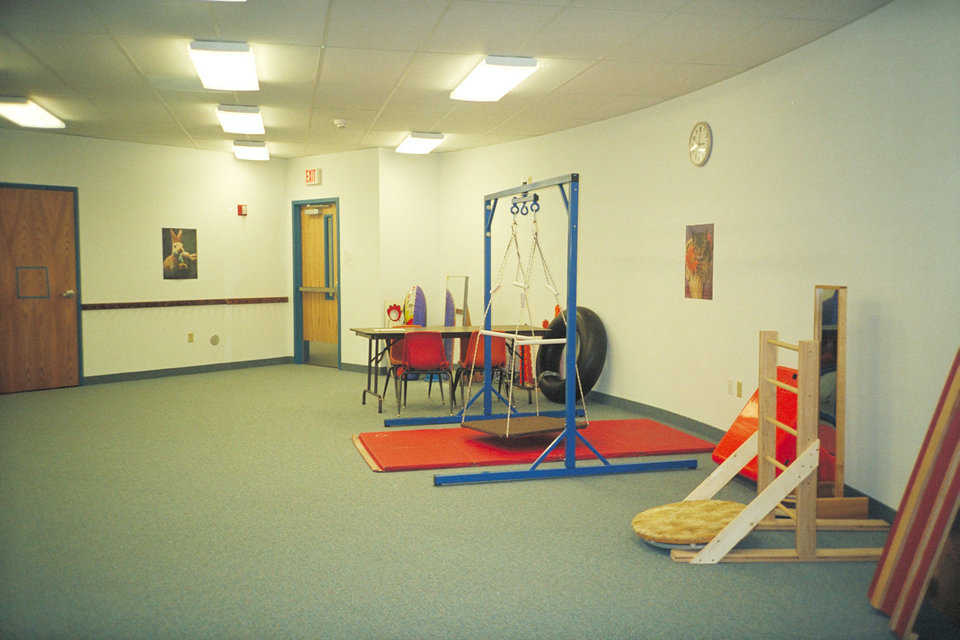
Special Education — Its soft overhead lighting creates a pleasant atmosphere.
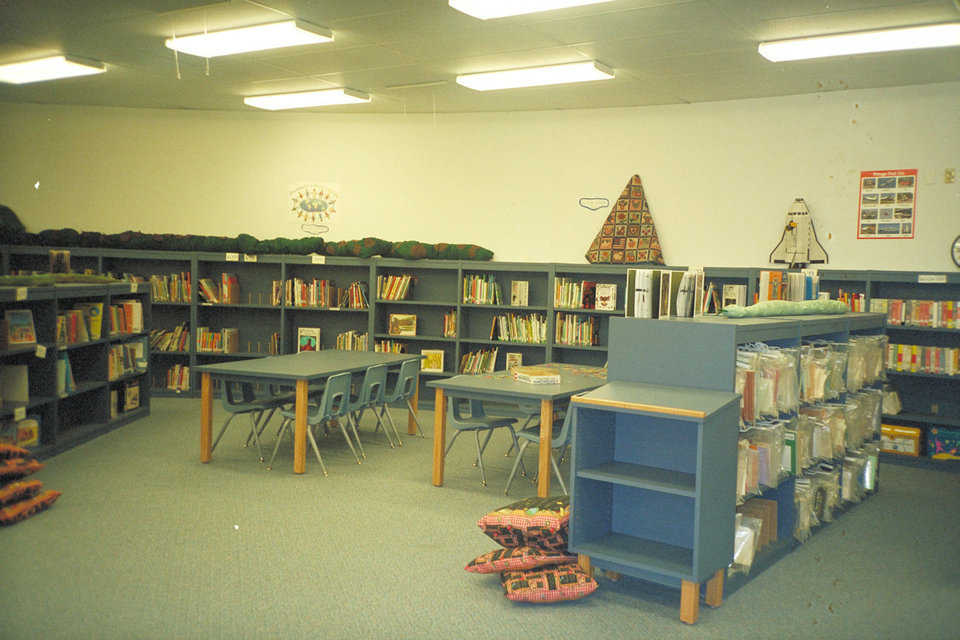
Library — Each room, including the library, has an individual heating/cooling unit along the external corridor. A central system heats and cools the internal section.
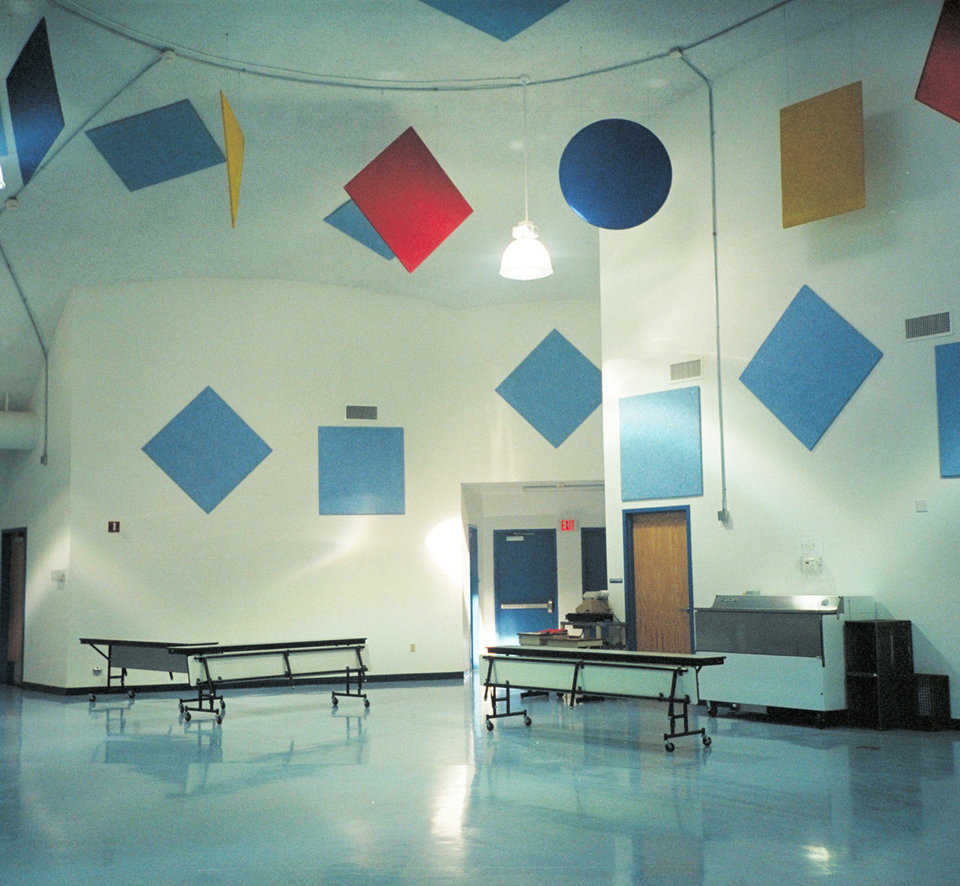
Multipurpose Dome — Superintendent Ron Squire said, “The cost for our two-dome facility averaged out to $68 per square foot. More importantly, we got the quality and features we wanted.”
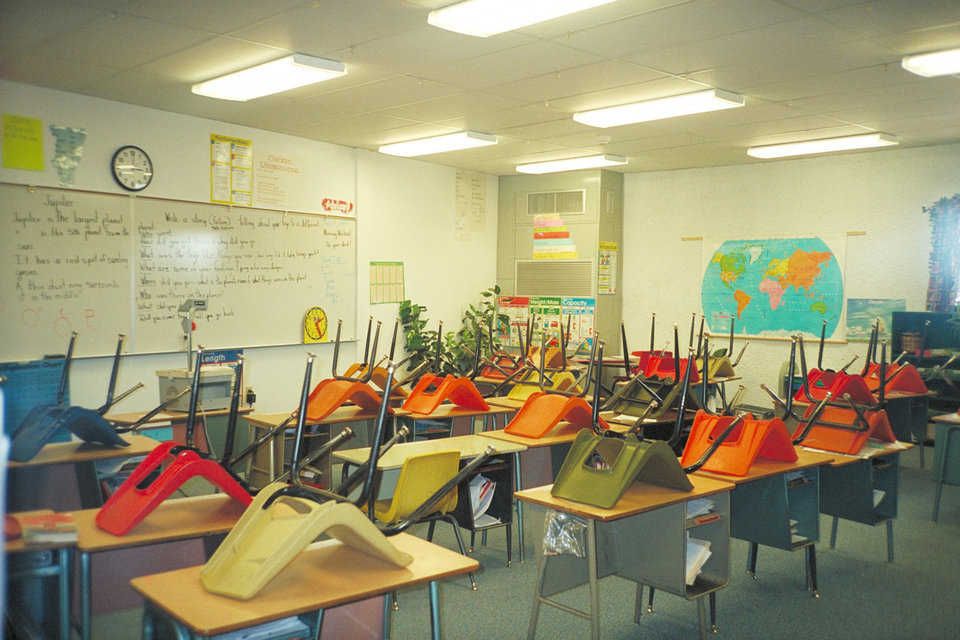
Classroom — Heber-Overgaard was Architect Marston Richards’ first Monolithic Dome project. He was pleased with the finished product.
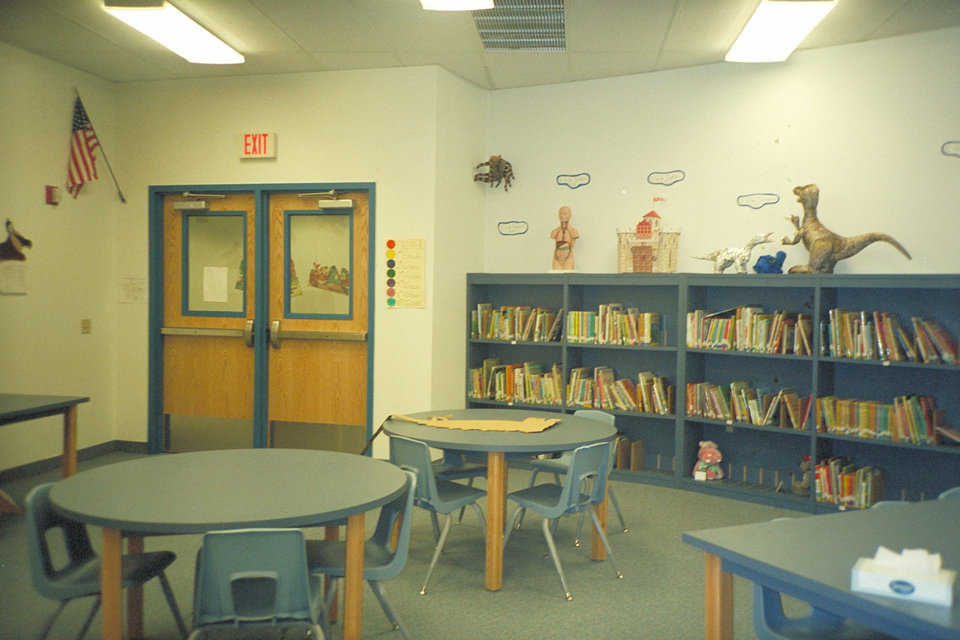
Study Area — During the Rodeo-Chediski fire in 2002, the Red Cross established a disaster-relief distribution and processing center at the school.
